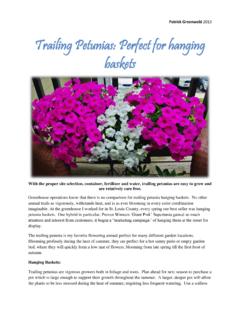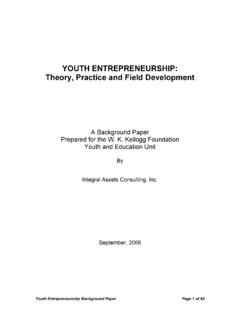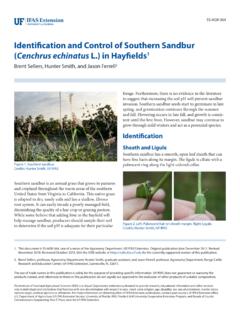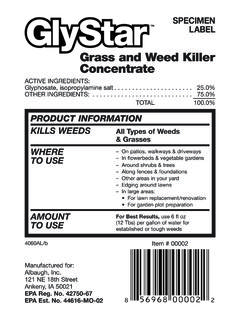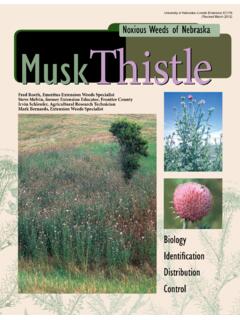Transcription of Garden Spade - University of Missouri Extension
1 The Garden Spade August 2017 Sandbur - A Southeast Word of Curse Sarah Denkler, MU Extension Horticulture Specialist Subscribe Now! Receive a monthly email with a direct link to The Garden Spade . Send email to An equal opportunity/access/affirmative action/pro-disabled and veteran employer **In This Issue** Sandburs Wildflowers in Bloom Ragweed, Not Goldenrod, Causes Allergies Pollinator Seed Mixes with Palmer Amaranth Horticulture in Utah Missouri Primrose Upcoming Events Reliable, Responsive and Relevant Information for the Missouri Gardener Sandbur is an annual grass from the genus Cenchrus that is often found in poorly maintained sandy soils. It is on the noxious weed list in 46 states for good reason.
2 It prefers sun to shade and can often make its way into the average yard. The plant is in the family Poaceae or the grass family and early in the year resembles grasses that we are familiar with. Once the plant forms spiny, sharp spurs we realize that it is more vicious than a common grass. Also known as burgrass the key to keeping the sandbur out of the yard is to maintain a healthy and dense stand of grass. Many have likely heard that lime can be added or nitrogen in order to eliminate the sandbur. What is really happening when you add one of these amendments is that you are helping to improve the lawn. Proper mowing, fertilization and watering, will keep your grass healthy and prevent the incursion of sandbur in your yard. Most of those who call already have the problem.
3 The way to control sandbur that is already established is to use pre-emergent herbicides. This must be done in March, before the soil temperature reaches 52 degrees Fahrenheit and seeds Picture from MU Guide IPM1024, Identifying Grass Seedlings The Garden Spade August 2017 2 Plants with Winter Interest Katie Kammler, MU Extension Horticulture Specialist Sandbur - A Southeast Word of Curse Sarah Denkler, MU Extension Horticulture Specialist germinate. A second application should be put down in June. Always read the label and follow directions carefully to avoid overuse. The same pre-emergent that is used to control crabgrass is often used to control sandbur. Read the label to make sure that sandbur is included in the list of weeds controlled.
4 Some chemical names for control of sandbur include: Treflan, Pendamethalin, Balan, Benefin and Oryzalin. These are sold under brand names such as: Barricade, Team, Surflan and Amaze Grass and Weed Preventer. Be aware that even with chemical application, it will often take 2 or 3 years to remove sandbur from the yard and even then, it can return as animals bring new seeds to the area. If you don t get pre-emergent control down you can use a post-emergent such as MSMA crabgrass killer or Roundup. MSMA should be applied when temperatures are above 75 Fahrenheit. Use these products when weeds are small and growing actively. As weeds mature, they become more difficult to kill. If weeds mature and produce new seed, you will have sandbur again next year.
5 It cannot be used if you have St. Augustine or Centipede lawns as it will kill your lawn. MSMA can be sprayed over Bermuda, Zoyzia or buffalo grass but can cause your lawn to yellow. A good application method is to spray the rate in an east to west pattern and the other half in a north to south pattern. This will help even out your control pattern. If you use Roundup remember that it will kill anything it touches and should only be used as a spot spray. Don t forget that proper lawn maintenance must be practiced to help remove and keep sandbur out of the lawn. Proper management includes mowing with sufficient frequency to prevent the removal of no more than 1/3 of the height of your grass at one time. Removing more than 1/3 will weaken the roots and slow development of grass.
6 The higher grass is cut the healthier the root system. Fertilize in early spring for cool season grass and again in fall; fertilize in late spring for warm season grass. If turf is weak and sparse then focus on seeding in fall and/or spring to try to bring your lawn density up and increase competition for the same water, nutrients and space. Pre-emergent cannot be used when seeding or reseeding a lawn. Mowing and hand pulling can be used to reduce sandbur populations during a year when seeding is the priority. Sandbur will modify their growth habit from upright to horizontal growth as the season progresses and continue to grow until a freeze. Persistence is the most important control strategy. Using all the above mentioned actions to control the sandbur will amount to nothing without scouting for the weed persistently to ensure it doesn t return.
7 What is a weed? A plant whose virtues have never been discovered. -Ralph Waldo Emerson Garden Quote The Garden Spade January Gardening Calendar Donna Aufdenberg, MU Extension Horticulture Specialist Outdoor Flowering plants and Ornamentals Keep newly planted trees and shrubs well watered. Clean up fallen rose and peony leaves. They can harbor disease and insect pests over the winter if allowed to remain on the ground. During hot, dry August days, avoid deep cultivation in your flower beds. Loosening the soil under these conditions reduces water uptake and make plants often look much worse after cultivation than before. Continue spraying roses with fungicides that are susceptible to black spot and other fungal diseases.
8 Keep an eye out for spider mites on ornamentals! They love it hot and dry. Frequent, strong jets of water can help reduce mite populations. Avoid any temptation to prune shrubs and trees now. Doing so will promote new growth that will not harden by winter which can lead to winter damage. If azaleas look chlorotic (pale green to yellow), check the soil pH. They need an acid soil. Vegetable Gardening Many herbs self-sow if the flowers are not removed. Dill and sage seeds fall around the parent plant and come up as volunteers the following spring. Harvest winter squash and pumpkins by cutting with 2 or 3 inches of stem; they ll keep better in storage that way than if stemless. Later this month, plant a winter cover crop to enrich your Garden soil.
9 Annual rye, red clover, and hairy vetch are good choices. Fall vegetables can be planted until the 20th of this month. Vegetables include lettuce, radishes, cabbage, broccoli, cauliflower, spinach and turnips. Compost plant materials from the Garden as crops are harvested. Avoid composting any plants that are disease or insect infested. Fruits and Nuts If your apples are lumpy, they may have apple maggots. Be sure that fruit is not left lying on the ground because the maggots live in fallen apples and then pupate in the soil. Heavy rains at harvest can dilute the sugars in melons. Watermelons can re-concentrate the sugar if left for a few dry days however cantaloupes cannot do this. To reduce the number of pests on your fruit tree for the coming year, pick up and destroy all fallen fruit.
10 Worms hide in the fruit and then pupate into the soil. They will be ready to lay eggs next year. Watch for fall webworm activity now on fruit and nut trees. Wildflowers in Bloom in the Month of August from Missouri Department of Conservation Common Milkweed Asters Sunflowers Evening Primrose Prairie Dock Goldenrod Cardinal Flower Yarrow Wild Bergamot St. John s Wort Great Blue Lobelia Sensitive Brier Blazing Star Pitcher Sage Compass Plant Butterfly Milkweed Black-eyed Susan August 2017 3 August Gardening Calendar Donna Aufdenberg, MU Extension Horticulture Specialist The Garden Spade Solidago, commonly called goldenrod, is a genus of about 100 to 120 species of flowering plants in the aster family, Asteraceae. Most are herbaceous perennial species found in open areas such as meadows, prairies, and savannas.




